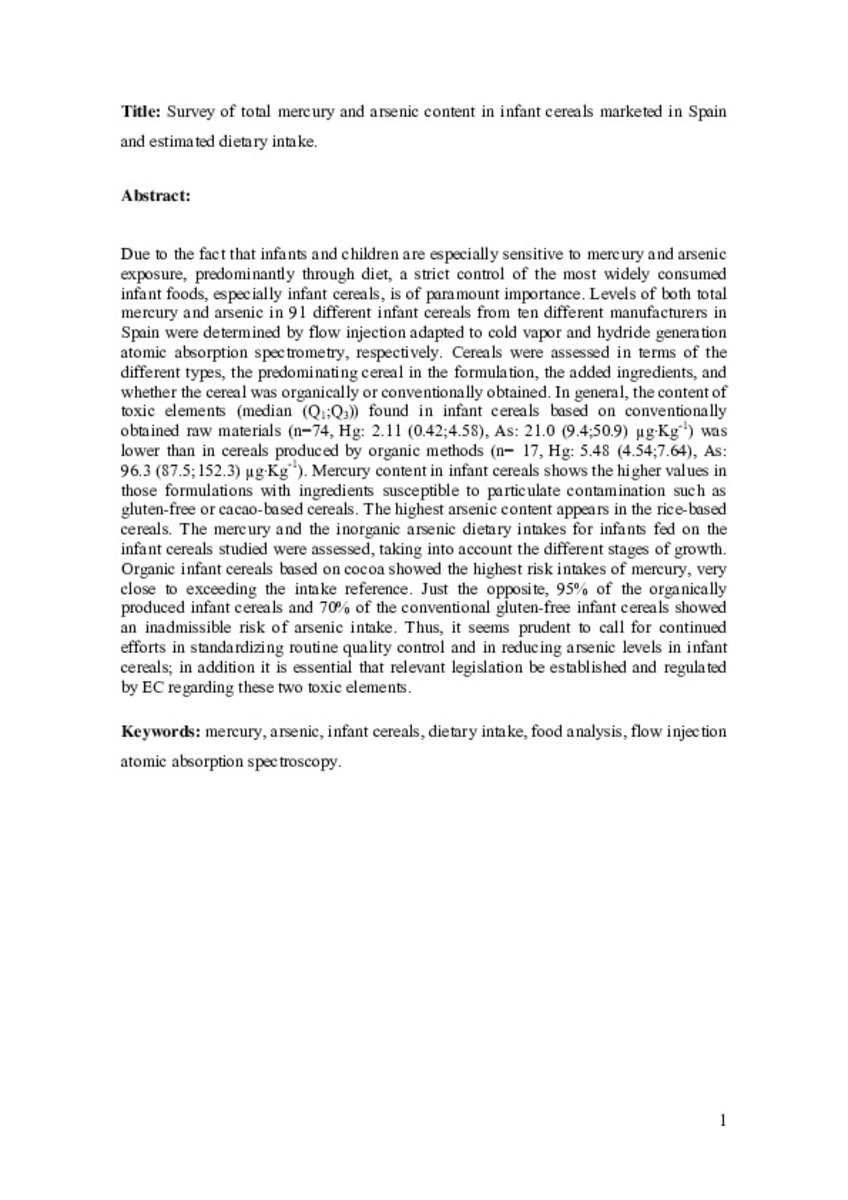Survey of total mercury and arsenic content in infant cereals marketed in Spain and estimated dietary intake.
Palabras clave :
Mercury
Arsenic
Infant cereals
Dietary intake
Food analysis
Flow injection 31 atomic absorption spectroscopy
Fecha de publicación :
2013
Cita:
Navarro, I. (Iñigo); Hernandez-Martinez, R. (Raquel). "Survey of total mercury and arsenic content in infant cereals marketed in Spain and estimated dietary intake." Food Control; 2013, 30(2):423-432
Aparece en las colecciones:
Estadísticas e impacto
0 citas en

0 citas en

Los ítems de Dadun están protegidos por copyright, con todos los derechos reservados, a menos que se indique lo contrario.












